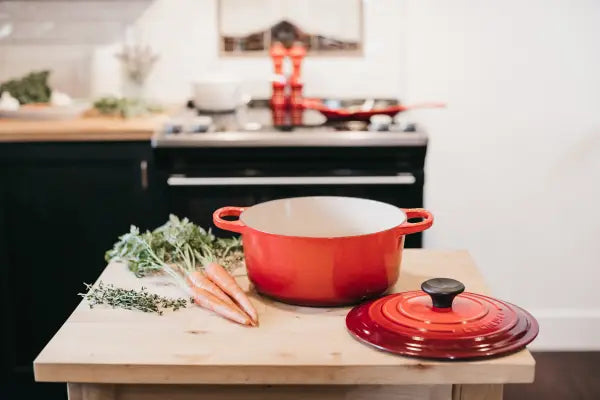Baby Led Weaning Foods: What to Serve First and What to Avoid

Starting solids is an exciting step in your baby’s development — but it can also feel a little overwhelming. What if they choke? What if they don’t eat enough? What foods are safe to try?
If you’re exploring Baby Led Weaning, you’re not alone. This popular approach helps promote self-regulation, oral development, and adventurous eating habits in babies. In this post, we’ll walk you through the best first foods to offer your self-feeding infant, what textures are safest, how to balance different weaning methods, and which foods to avoid altogether.
What Is Baby Led Weaning?
Baby Led Weaning (BLW) is a feeding method that encourages babies to self-feed from the start of their solid food journey. Instead of spoon-feeding purees, babies are offered developmentally appropriate finger foods they can explore at their own pace.
Whether you’re fully following a baby-led feeding model or combining it with traditional spoon-feeding, the goal is the same: to give babies autonomy over what, how much, and how quickly they eat.
At Bébé Foodie, we’re big fans of combo feeding too. You don’t have to choose between “this or that” — you can do both. Spoon one day, finger food the next, or a bit of everything at once. The most important part? That it works for you and your baby.
The Best First Foods for Baby-Led Weaning
When choosing first foods for Baby Led Weaning, focus on soft, easy-to-grasp textures or choose harder foods that don’t break apart easily. You can even use purees for Baby-Led Weaning.
Soft and Squishy Solids
Offering soft, squishy solids are perfect for beginners because they’re easy to prepare, nutrient-dense, and safe for babies to explore. These foods should be soft enough to mash with gentle pressure between your fingers, and long and thick enough (about the size of two adult fingers) for your baby to hold with their whole hand – this allows your little one to be able to practice suckling on and biting into foods. It also helps to ensure they are less likely to fit the whole piece within their mouth.
Top Recommendations:
-
Banana – Naturally soft, rich in potassium and fiber
-
Avocado – Loaded with healthy fats, vitamin E, and fiber
-
Roasted Sweet Potato or Carrot – Great source of beta-carotene, vitamin C, and fiber
-
Omelette (cut into strips) – High in protein, choline, and healthy fats for brain development
-
Broccoli (steamed or roasted) – Full of fiber, iron, and vitamin C
-
Zucchini (well-cooked) – High in vitamins A and C
Bébé Foodie tip: If you can easily mash the food with your tongue on the roof of your mouth, it’s likely safe for your baby to handle.

Resistive Food Teethers
Resistive food teethers are firmer, baby-safe foods that don’t break apart easily but are satisfying to gnaw on. These foods help build oral motor skills, reduce gag sensitivity, and introduce texture in a safe and engaging way. They can also be a soothing option for teething infants. These options allow babies to practice chewing, strengthen jaw muscles, and learn a mental map of where they can place things in their mouth — even if they don’t ingest much of them at first.
Top Resistive Teether Foods:
-
Mango Pit – Contains fiber, healthy fats, and natural resistance
-
Pineapple Core – Firm and fibrous with vitamin C and manganese
-
Corn Cob (kernels removed) – Offers texture, fiber, and antioxidants
-
Large Steak Bone (meat, fat, and sharp points removed) – Provides iron, zinc, and choline
Remember: Your baby may not eat much of these at first, but they’re learning a lot. Every gnaw, lick, and bite is building skills that will support lifelong feeding.
Safety Tips for Resistive Foods
-
Always supervise your baby during meals
-
Choose large, thick pieces they can grip without breaking off chunks
-
Avoid small, brittle foods like raw apples or nuts
-
If your baby has several teeth, be extra mindful of their ability to bite off larger pieces

Can You Use Purees in Baby Led Weaning?
Absolutely. Baby Led Weaning doesn’t mean avoiding purees altogether — in fact, they can play a valuable role in exposing babies to new flavors and textures.
The key is responsive feeding: letting your baby lead, even when it comes to purees.
At Bébé Foodie, we’re all about balance. There’s no “one right way” to feed your baby. Combo feeding — offering both purees and finger foods — is not only allowed, it’s encouraged. You get the benefits of both worlds, and your baby gets a fuller sensory experience.
And don’t forget about yourself, either! If offering a puree lets you take a breath or sit down with your own plate for once, that’s a win. Feeding your baby shouldn’t mean forgetting to feed yourself.
How to Serve Purees in a Baby-Led Way
-
Let baby scoop with their hands
-
Offer a preloaded spoon for them to bring to their mouth
-
Use purees as dips for finger foods
Great Naturally Occurring Purees:
-
Greek Yogurt – High in protein and probiotics
-
Hummus – A good source of iron and plant-based protein
-
Nut Butters (thinned) – Healthy fats and protein (use breast milk or formula to thin)
-
Cottage Cheese (thinned as needed) – Packed with calcium and protein
-
Oatmeal – Rich in fiber, protein, and complex carbs
Pro tip: Offer the same food two ways — roasted sweet potato as a stick and a little sweet potato mash on the side. Let your baby explore both!

What to Avoid When Starting Baby Led Weaning
Understanding which foods not to serve is just as important as knowing what’s safe. The CDC and AAP recommend avoiding high-risk choking foods until age 4, unless modified appropriately and your baby is developmentally ready.
Common Choking Hazards to Avoid
- Raw fruit or vegetable chunks
-
Hot dogs
- Whole nuts and seeds
- Uncut grapes, cherry tomatoes, and berries
- Popcorn
- Hard, sticky, or chewy candy
- Marshmallows
- Chunks of cheese or string cheese
- Thick dollops of nut butter
- Sausages and meat sticks
- Chewing gum
For a full list of choking hazards and safety tips:
Also avoid: honey (until age 1), cow’s milk as a drink (until age 1), and foods with added sugars or too much salt.
Let Your Baby Lead the Way
At the heart of Baby Led Weaning is the idea that babies know how much they need to eat and when they’re full. Letting your baby eat per their cues (no matter what the feeding method is, really!) is to let them practice their oral motor skills, develop self-feeding cues, expose your baby to various textures and flavors, and allow them to use natural appetite control to promote healthy eating habits.
At Bébé Foodie, we say: let your baby lead, but don’t forget you’re in this too. Your rhythm matters. Your comfort matters. Choose the approach that feels right for your family, not the one that just looks good on Instagram.
Whether you follow a full baby-led feeding approach or combine it with other weaning methods, the most important part is tuning in to your baby’s cues — and creating a safe, positive mealtime environment.
Need Support on Your Baby’s Feeding Journey?
At Bébé Foodie, we’re here to guide you through every stage of your baby’s food journey — from first bites to family meals.
Our mobile app offers:
-
Daily food ideas developed by a pediatric dietitian
-
Age-based safety and serving tips
-
A searchable recipe collection for every stage
-
Tools to log allergens, track foods, and plan meals
Explore the Bébé Foodie app and give your little one a confident, joyful start with food.

Written by Lauren Remondino, MS, CCC-SLP, CLC
Feeding Therapist, Speech Language Pathologist, Lactation Counselor & Advisor at Bébé Foodie
Lauren Remondino is a pediatric feeding specialist and mom, with a background in speech-language pathology and lactation counseling. After years working in top children’s hospitals, she now brings her clinical expertise—and real-life parenting perspective—to Bébé Foodie. Lauren works closely on developing our How to Serve guides and feeding support content, helping parents feel confident at every stage of their baby’s food journey. She’s all about keeping things realistic, flexible, and supportive—because feeding isn’t one-size-fits-all, especially when you’re juggling nap schedules and snack requests.


Leave a comment